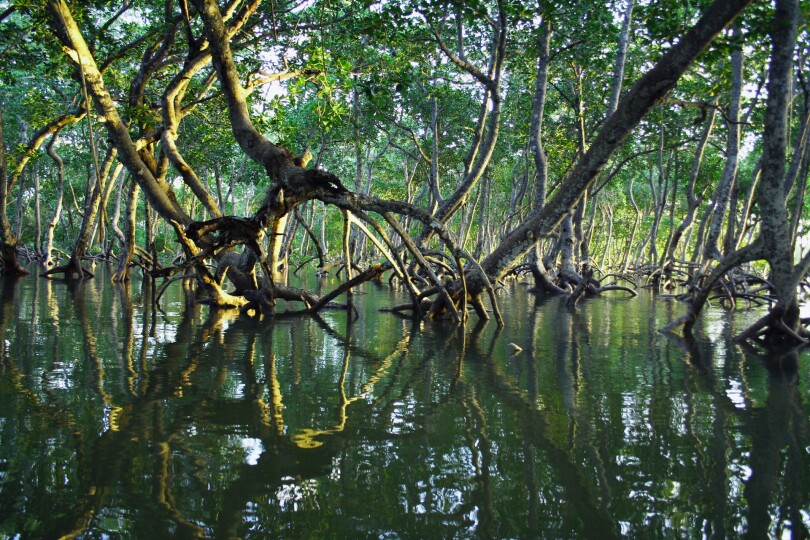3 Innovations from the International Horticultural Expo.
29 Apr 24
Enviro ChatThe Global News Source for the World of Science and Chemicals
01 August 2023
Enviro Chat
The Middle East is a region more recognised for its desert landscapes and arid weather patterns than its greenery and biodiversity. However, one particular plant has shown itself more than capable of adapting to the inhospitable climate of the Arab peninsula – and in doing so, could prove to be a valuable ally in the fight against climate change.
The humble mangrove thrives in hot, salty and muddy conditions, which are found in abundance on the UAE’s lengthy coastline. While some parts of the mangrove forest have been in place for centuries, others are being regenerated with new plantations in order to try and bolster this resilient and versatile resource for the battle ahead.
The Emirati terrain and climate is not known for its ability to foster much in the way of vegetation – but tropical mangrove forests are one exception to that rule. Not only can the mangrove trees which form the cornerstone of this complex ecosystem withstand high levels of salinity and extreme temperatures, they actually thrive in them.
As well as being incredibly hardy, mangrove forests also provide great environmental value. Firstly, they can act as buffers for coastal communities living in their vicinity, protecting them against the worst effects of severe storms and flooding. They also provide a rare and much needed habitat for a wide variety of different fauna, helping to boost biodiversity in the region.
Perhaps most importantly of all, mangrove forests can also serve as a sink for atmospheric carbon. This is especially crucial in the Gulf region, where creeping urbanisation and an historical reliance on fossil fuels has compromised air quality and contributed to an outsized carbon footprint, which is why the UAE is keen to prioritise their longevity going forwards.
According to research conducted by the United Nations Environment Programme, the coverage provided by mangrove forests across the globe had fallen 3.4% between 1996 and 2020 due to an array of anthropogenic factors. However, concerted efforts to conserve them has seen their numbers stabilise in the last few years.
The UAE has been leading the charge on this front. At present, the country hosts some 60 million mangrove trees across an area of 70 square miles, around 40% of which is artificially planted. Some sections of the remaining 60% have been in-situ for over 300 years and in a bid to ensure they endure there for centuries more to come, many zones are now protected. The prohibition of vehicles, camels and people in these areas has had hugely encouraging effects thus far.
The Emirati government is keen to build upon that success and has announced plans to plant 100 million more mangroves by 2030. It’s expected that cumulatively, its mangrove forests will be capable of absorbing and storing some 43,000 tonnes of CO2. However, the UN has warned that survival rates of new plantations are often quite low, so the UAE would do well to prioritise sustaining these new populations just as much as the planting of them.
DOWNLOAD PDF

2 Day Seminar Program
@ ArabLab+ 2024
24 & 25 September 2024
22 Apr 24
Lab ChatYour stay in Dubai
Labkit
Product News
Chemkit
Product News
Thinking about exhibiting at ARABLAB 2024? Watch our video to find out more.
Join the world’s leading organisations…
Join our mailing list and receive the ARABLAB newsletter and event updates.